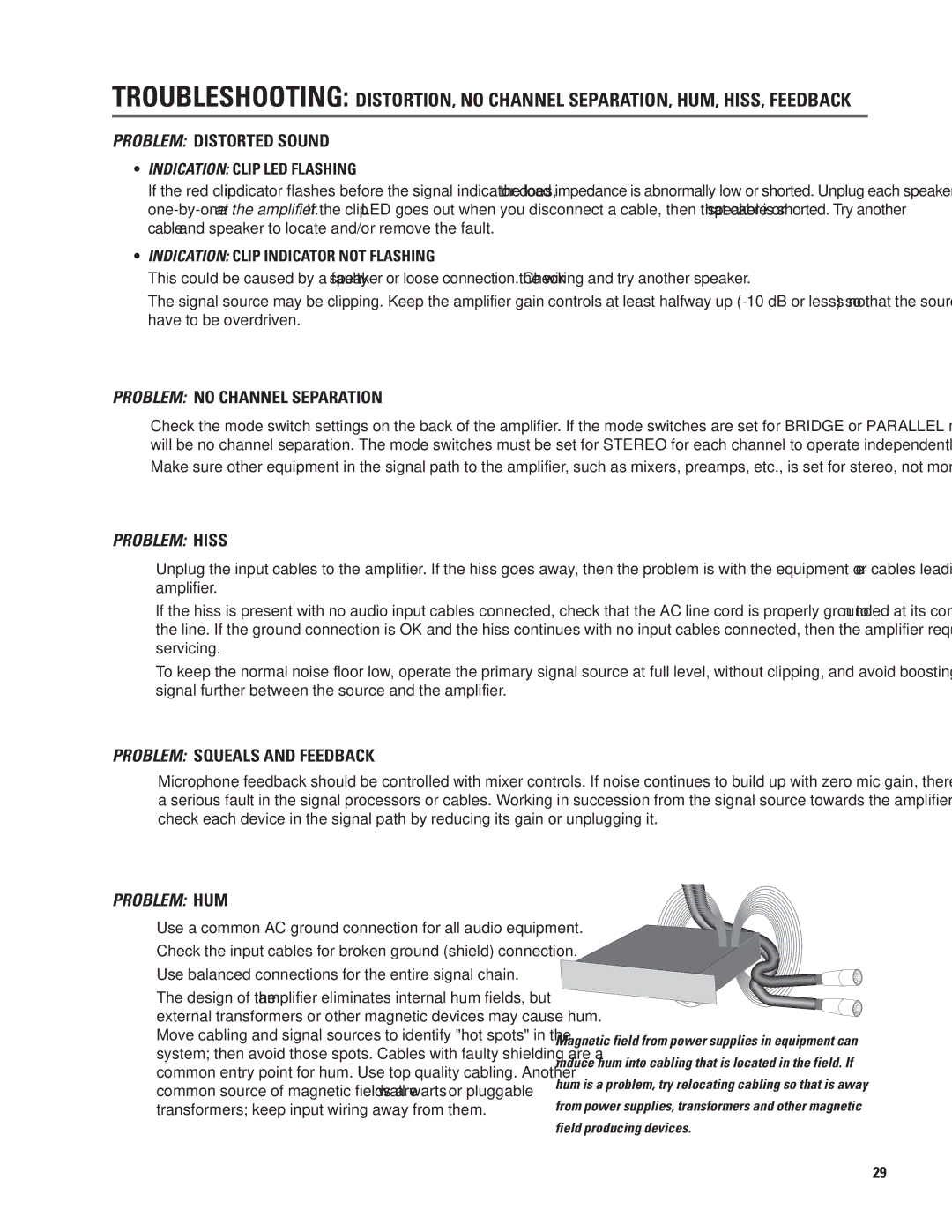
TROUBLESHOOTING: DISTORTION, NO CHANNEL SEPARATION, HUM, HISS, FEEDBACK
PROBLEM: DISTORTED SOUND
•INDICATION: CLIP LED FLASHING
•If the red clip indicator flashes before the signal indicator does, the load impedance is abnormally low or shorted. Unplug each speaker
•INDICATION: CLIP INDICATOR NOT FLASHING
•This could be caused by a faulty speaker or loose connection. Check the wiring and try another speaker.
•The signal source may be clipping. Keep the amplifier gain controls at least halfway up
PROBLEM: NO CHANNEL SEPARATION
•Check the mode switch settings on the back of the amplifier. If the mode switches are set for BRIDGE or PARALLEL mode, there will be no channel separation. The mode switches must be set for STEREO for each channel to operate independently.
•Make sure other equipment in the signal path to the amplifier, such as mixers, preamps, etc., is set for stereo, not mono.
PROBLEM: HISS
•Unplug the input cables to the amplifier. If the hiss goes away, then the problem is with the equipment or cables leading to the amplifier.
•If the hiss is present with no audio input cables connected, check that the AC line cord is properly grounded at its connection to the line. If the ground connection is OK and the hiss continues with no input cables connected, then the amplifier requires servicing.
•To keep the normal noise floor low, operate the primary signal source at full level, without clipping, and avoid boosting the signal further between the source and the amplifier.
PROBLEM: SQUEALS AND FEEDBACK
•Microphone feedback should be controlled with mixer controls. If noise continues to build up with zero mic gain, there is a serious fault in the signal processors or cables. Working in succession from the signal source towards the amplifier, check each device in the signal path by reducing its gain or unplugging it.
PROBLEM: HUM
•Use a common AC ground connection for all audio equipment.
•Check the input cables for broken ground (shield) connection.
•Use balanced connections for the entire signal chain.
•The design of the amplifier eliminates internal hum fields, but external transformers or other magnetic devices may cause hum. Move cabling and signal sources to identify "hot spots" in the system; then avoid those spots. Cables with faulty shielding are a common entry point for hum. Use top quality cabling. Another common source of magnetic fields are “wall warts” or pluggable transformers; keep input wiring away from them.
Magnetic field from power supplies in equipment can induce hum into cabling that is located in the field. If hum is a problem, try relocating cabling so that is away from power supplies, transformers and other magnetic field producing devices.
29
